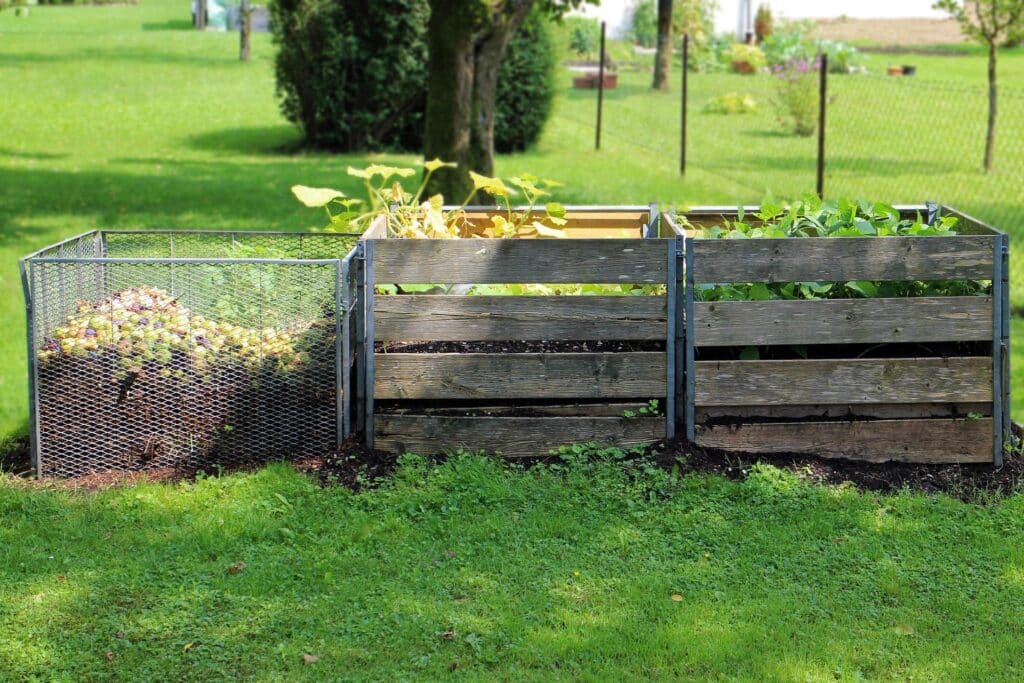Many gardeners notice that certain areas of their yard seem to attract more flies than others, often wondering if specific plants are drawing these unwelcome visitors. The relationship between flies and plants is complex—while some plants naturally attract flies through their scents, nectar, or decaying matter, others actually repel them. Understanding which plants attract flies and why can help you make informed landscaping decisions and develop strategies for fly control around your home and garden areas.
What types of plants attract flies?
Several types of plants naturally attract flies through various mechanisms. Flowering plants with strong, sweet fragrances like marigolds, zinnias, and sunflowers draw flies seeking nectar, while fruit-bearing plants including apple trees, berry bushes, and grape vines attract flies to their ripening or fallen fruit. Herbs with pungent odors such as basil, mint, and fennel can attract certain fly species, though they may repel others.
Plants with decaying matter create ideal fly breeding grounds—compost piles, areas with fallen leaves, or plants with rotting vegetation naturally draw flies looking for egg-laying sites. Moisture-loving plants in poorly drained areas also attract flies, as many species require water for reproduction. Additionally, plants that attract aphids or other small insects indirectly draw flies that feed on these pests or the honeydew they produce. Understanding these attractions helps gardeners make strategic planting decisions and implement proper garden maintenance to minimize fly problems while maintaining beautiful landscapes.
Are flies attracted to indoor plants or outdoor plants?
Flies are attracted to both indoor and outdoor plants, but for different reasons and with varying intensity. Outdoor plants typically attract more flies due to their accessibility, larger size, and integration with the broader ecosystem where flies naturally live and breed. Outdoor flowering plants, fruit trees, and gardens provide abundant food sources and breeding sites that support larger fly populations.
Indoor plants attract flies primarily when they create favorable conditions like overwatering that leads to fungal growth, organic matter decomposition in soil, or when they harbor pest insects like aphids or fungus gnats. Houseplants with sweet-smelling flowers or those near windows may also draw outdoor flies inside.
The attraction level depends largely on plant health and maintenance—well-maintained indoor plants pose minimal fly attraction, while neglected plants with standing water, decaying matter, or pest problems become significant attractants. Outdoor plants in gardens with proper drainage and maintenance typically cause fewer fly problems than those in areas with poor sanitation or excessive moisture. Location also matters, as plants near garbage areas, compost, or pet waste will naturally experience higher fly activity regardless of whether they’re indoors or outdoors.
Do flies cause damage to plants?
Most common house flies and related species cause minimal direct damage to healthy plants, as they primarily feed on nectar, decaying matter, and other insects rather than plant tissues. However, certain fly species can cause significant plant damage through their feeding and reproductive behaviors. Root maggots and leaf miners are fly larvae that tunnel through plant roots, stems, and leaves, creating visible damage and potentially killing plants.
Fruit flies and related species damage crops by laying eggs in ripening fruits, causing them to rot and become unmarketable. Fungus gnats, while primarily nuisances to humans, can damage plant roots when their larvae feed on organic matter and root hairs in soil, particularly affecting seedlings and young plants.
Indirect damage occurs when flies spread plant diseases, carrying bacterial and fungal pathogens between plants on their bodies and feet. Large fly populations can also stress plants by constantly landing on leaves and interfering with photosynthesis, though this is less common.
Additionally, flies can contaminate fruits and vegetables intended for human consumption, making them unsuitable for harvest even when the plants themselves aren’t damaged. Proper identification of fly species helps determine whether they pose actual threats to plant health or are simply nuisances.
How to prevent a fly infestation
Preventing fly infestations around plants requires addressing both attractants and breeding sites. Maintain proper garden hygiene by promptly removing fallen fruit, dead plant material, and organic debris that attract flies and provide breeding opportunities. Ensure adequate drainage around plants to prevent standing water where flies reproduce, and avoid overwatering indoor plants that can create favorable conditions for fungus gnats and other moisture-loving species.
Use companion planting strategies by incorporating fly-repelling plants like lavender, mint, rosemary, and marigolds throughout your garden to naturally deter flies. Install physical barriers such as fine mesh covers over vulnerable crops during peak fly season, and consider timing plantings to avoid periods when specific fly species are most active.
For indoor plants, use well-draining soil mixes, avoid fertilizers that attract flies, and maintain proper ventilation to discourage fly activity. Regular inspection of both indoor and outdoor plants helps identify early signs of fly problems before they become established. Strategic placement of plants away from garbage areas, compost piles, and pet waste reduces fly attraction to garden areas.
What to do if you have a fly infestation
If you’re experiencing a fly infestation around your plants, take immediate action to address both the current population and underlying attractants:
- Remove attractants: Clean up fallen fruit, dead plant material, and any decaying organic matter around affected plants.
- Improve drainage: Address standing water issues and reduce overwatering that creates breeding sites for flies.
- Use targeted treatments: Apply appropriate insecticides or biological controls specific to the fly species affecting your plants.
- Install traps: Place sticky traps, fruit fly traps, or pheromone traps near affected areas to capture adult flies.
- Introduce beneficial insects: Release predatory insects like ladybugs or lacewings that feed on fly larvae and eggs.
- Modify plant care: Adjust watering schedules, improve soil drainage, and remove any diseased or stressed plants that attract flies.
- Create barriers: Use row covers or fine mesh to protect vulnerable plants during peak fly activity periods.
- Monitor and maintain: Conduct regular inspections and continue prevention practices to prevent reinfestation after initial control efforts.
When to call a professional
When dealing with fly problems that are damaging your plants or creating persistent issues in your garden, professional pest control services offer the most effective and targeted solutions. At Aptive, our pest control experts can assess the extent of your fly infestation and identify the specific species affecting your plants, which is crucial for determining the most appropriate treatment methods.
If you’ve noticed fly damage to your plants or persistent fly activity around your garden areas, don’t wait—contact Aptive today for a free quote. We’ll help you eliminate the fly problem while keeping your plants healthy and thriving.
FAQs about Flies and Plants
Here are some common questions homeowners often ask when it comes to fly infestations and plants.
Q: How do I protect my plants from flies?
Protect plants from flies by maintaining proper garden hygiene—remove fallen fruit, dead plant material, and organic debris promptly. Ensure adequate drainage to prevent standing water where flies breed, and avoid overwatering. Use companion planting with fly-repelling plants like lavender, mint, and marigolds throughout your garden. Install physical barriers such as fine mesh covers over vulnerable crops, and consider beneficial insects like ladybugs that prey on fly larvae to provide natural control.
Q: What type of flies cause the most damage to plants?
Root maggot flies cause the most severe plant damage, as their larvae tunnel through plant roots and stems, often killing affected plants. Leaf miner flies create visible tunnels in leaves, weakening plants and reducing photosynthesis. Fruit flies damage crops by laying eggs in ripening fruits, causing rot and making harvests unmarketable. Fungus gnats, while less destructive, can damage seedling roots and young plants when present in large numbers, particularly in greenhouse or indoor growing environments.
Q: How do I know if flies are affecting my plants?
Signs of fly damage include visible tunnels in leaves (leaf miners), wilting or stunted growth from root damage (root maggots), and rotting or damaged fruits with small holes where eggs were laid. You might notice increased fly activity around specific plants, yellowing or browning foliage, and small maggots in soil or plant tissues. Indoor plants may show signs of fungus gnat damage through poor growth, yellowing leaves, and tiny flies emerging from soil when watered or disturbed.









